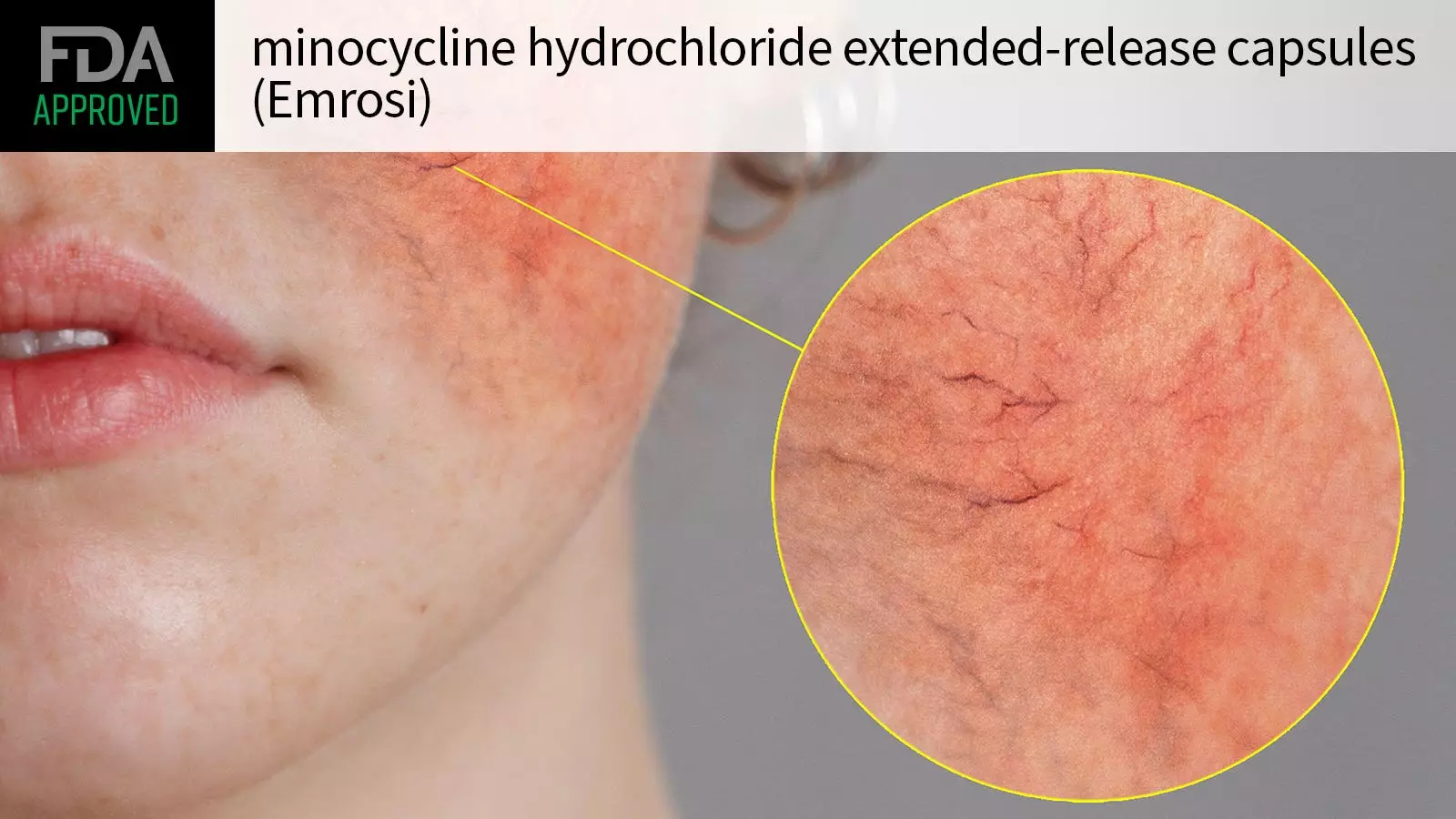On Monday, Journey Medical announced that the U.S. Food and Drug Administration (FDA) has approved the use of minocycline hydrochloride extended-release capsules, marketed as Emrosi, specifically for the treatment of inflammatory lesions associated with rosacea in adult patients. This tetracycline antibiotic has gained recognition for its potential therapeutic benefits in the management of this prevalent dermatological condition.
The approval of Emrosi hinges on data derived from two pivotal phase III clinical trials, MVOR-1 and MVOR-2, which collectively involved 653 adults diagnosed with papulopustular rosacea. In these studies, participants were randomly assigned to receive either minocycline hydrochloride (40 mg), doxycycline—currently the gold standard for rosacea treatment—or a placebo over a 16-week duration. Notably, the patient population presented at least 15 inflammatory lesions (with an average of 25) alongside an Investigator’s Global Assessment (IGA) score indicating moderate to severe disease (scores of 3 or 4).
The results of these trials illustrated a marked advantage for those receiving minocycline hydrochloride. Specifically, a significantly higher proportion of participants in this group achieved treatment success—measured as an IGA score of 0 or 1—compared to those receiving either doxycycline or placebo. The findings from MVOR-1 showed 65% of minocycline patients achieving the desired outcome, compared to 46% for doxycycline and only 31% for the placebo group. Similarly, MVOR-2 reported success rates of 60%, 31%, and 27%, respectively.
In analyzing the efficacy in reducing the number of inflammatory lesions, minocycline hydrochloride consistently outperformed the alternatives. The treatment resulted in a mean reduction of 75-79% in inflammatory lesions, while doxycycline and placebo showed reductions of 60-63% and 46-47%, respectively. This evidence underscores minocycline’s potential to alleviate the burden of rosacea effectively.
Despite these promising results, it is essential to consider the safety profile of minocycline hydrochloride based on clinical trial data. The most frequently reported adverse event was dyspepsia, affecting 2% of participants in the minocycline group, with none reported in the placebo cohort. Moreover, there are significant warnings associated with minocycline’s use, including the risks of serious allergic reactions and skin conditions.
The prescribing information accentuates that minocycline should be used judiciously due to concerns about potential drug resistance. Specifically, it must be contraindicated in patients with a history of hypersensitivity to tetracyclines. Risks of serious reactions, including anaphylaxis and drug rash with eosinophilia and systemic symptoms, underscore the necessity for caution.
Furthermore, use during pregnancy and in young children is discouraged, given the risk of permanent tooth discoloration and potential inhibition of bone growth. The guidance also warns against breastfeeding while taking this medication.
As Journey Medical anticipates the commercial availability of minocycline hydrochloride in the first half of 2025, stakeholders in dermatology and pharmaceuticals must stay informed about the implications of this approval. With its promising effectiveness and significant safety considerations, minocycline hydrochloride represents a noteworthy advancement in the therapeutic landscape of rosacea treatment.


Leave a Reply